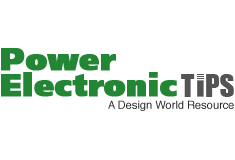 Using the new IEEE 802.3bt standard, Power over Ethernet (PoE) can be used to deliver high-speed connectivity up to 90 W of power over Local Area Network (LAN) connections. ON Semiconductor’s solutions not only support the new standard power limit, but extends it further to 100 W for systems including telecommunications and digital signage.
Using the new IEEE 802.3bt standard, Power over Ethernet (PoE) can be used to deliver high-speed connectivity up to 90 W of power over Local Area Network (LAN) connections. ON Semiconductor’s solutions not only support the new standard power limit, but extends it further to 100 W for systems including telecommunications and digital signage.
The new IEEE 802.3bt standard for PoE has the potential to transform every vertical market touched by the IoT, by enabling more sophisticated endpoints operating across larger networks. The IEEE 802.3bt standard optimizes energy management through the new “Autoclass” feature, which enables Powered Devices (PDs) to communicate their specific power needs to the Power Sourcing Equipment (PSE). This, in turn, allows each PSE to allocate just the right amount of power to each PD, maximizing both the available energy and bandwidth.
With up to 90 W of power available, compared to the 30 W provided by the IEEE 802.at standard (PoE+), IEEE 802.3bt can provide both power and connectivity to new applications that would otherwise require a dedicated and typically off-line power source. PoE will simplify network topologies and provide a more robust ‘plug and play’ user experience.
Forming the foundation of ON Semiconductor’s PoE-PD solutions, the NCP1095 and NCP1096 interface controllers incorporate all of the features needed to implement a PoE interface, including detection, auto-classification and current limiting. The controllers employ either an external (NCP1095) or internal (NCP1096) hot-swap FET. The integrated hot-swap FET in the NCP1096 features the lowest on-resistance available in a Type 3 or Type 4 PoE controller The controllers are complemented by the NCP1566 DC-DC Controller, the FDMC8622 Single MOSFET and the FDMQ8203 and FDMQ8205AGreenBridge Quad MOSFETs, which have been developed to provide a more efficient alternative to a diode bridge in PoE applications. Together, these devices enable highly efficient PoE interfaces with up to the standard limit of 90 Watts of power or to a proprietary 100 W solution if more power is needed.


Leave a Reply